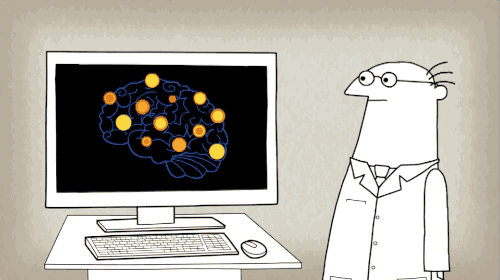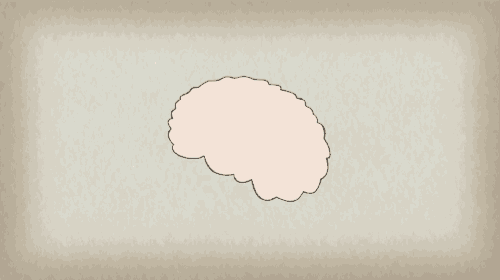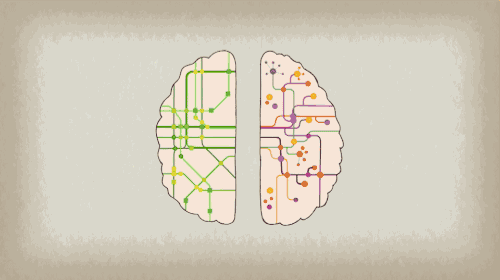The powerful effects of listening to music make it one of the best pastime activities to relax and have a good time alone or with friends and family. It therefore makes sense that the people that get the most of these benefits are those more actively involved in making and performing music – musicians.
Here are some of the things scientists have so far established about musician’s brains (so you might want to really motivate your child not to quit his or her music lessons):
1. There’s a lot more brain activity when listening to music, so even parts of the brain that would normally be inactive come alive. And that can’t be a bad thing.
Here’s the deal.
When scientists look at brains using FMRIs and PET scans while subjects are doing normal things, the parts of the noggin associated with those things light up as expected.
But when the subjects are listening to music … eek! There’s a light show going on.
Doctors figure this happens because our brains break down what we’re hearing into its different parts, analyze those parts, and then put them back together before it’s time for the first foot tap or booty shake.
When someone plays music? Stand back. Fireworks! Via UPworthy
2. Playing a musical instrument engages so many different parts of the brain, more than any other activity can. This makes instrument-players amazing at multitasking:
Playing an instrument involves doing lots of things at once.
It’s like a full-body workout for the brain.
Different areas of the brain get into the act…
When you play music, you use fine motor skills controlled by the creative and analytic hemispheres of your brain. There’s language involved, and math, too. Plus, feeling, memory, and a lot of everything else your brain can do. Via UPworthy
3. Because of all that brain activity, musician’s brains tend to be more ‘connected’. Keep in mind that it’s the left side of the brain that’s more musical while the right is more creative. As a result, not only do musicians do better academically, but their social skills also get a boost.
In fact, playing music strengthens the *corpus callosum*, the link between the two halves. Scientists are seeing all kinds of new connections being made as people play music.
In fact, musicians that begin training early (around 7 years) have a considerably bigger corpus callosum than those who don’t receive musical training.
That means that the two halves of musicians’brains can communicate with one another more quickly and along more diverse routes across their expanded corpus callosum. As a result, musicians are more likely to be inventive problem-solvers. Via MIC
This also means they can perform more executive functions such as planning, strategizing and paying attention to detail with prowess because they learn to handle both emotional and cognitive elements simultaneously.

All that plays into the strengthening of the brain’s executive functions, including the ability to strategize, retain information, regulate behavior, solve problems and adjust plans to changing mental demands. The results of one such study on the connections between music training and executive function found increased activity in the supplementary motor area and prefrontal cortex of musicians’ brains, two areas that are often seriously deficient in people suffering from executive function disorders, such as ADHD. Via MIC
4. Musical training is therefore an effective tool in the treatment of children with learning and behavioral challenges like ADHD. It has been observed to be effective in helping them deal with the symptoms with significant success.
5. Because of the demands that musical performance puts on the brain, musician’s memories are so much more developed. As a result, they are able to create, encode and retrieve memories a lot faster and with more accuracy.
When musicians process memories, they tend to use an unusual tagging system that lets them file memories in multiple categories. Via UPworthy
Music on, world off ?
— Tanner Patrick (@TannerPatrick) March 8, 2016
8 ways music benefits and affects our brains: https://t.co/5GcRP7afTV#edchat#musicedpic.twitter.com/cYSNcaDGfV
— Dr. Justin Tarte (@justintarte) March 4, 2016
Related Articles:
Musicians’ brains fire symmetrically when they listen to music
Music can be a transformative experience, especially for your brain. Musicians’ brains respond more symmetrically to the music they listen to. And the size of the effect depends on which instrument they play.
People who learn to play musical instruments can expect their brains to change in structure and function. When people are taught to play a piece of piano music, for example, the part of their brains that represents their finger movements gets bigger. Musicians are also better at identifying pitch and speech sounds – brain imaging studies suggest that this is because their brains respond more quickly and strongly to sound. Via New Scientist
Studying a Virtuoso Violinist’s Brain with MRI
DURHAM, NC – Until just a few years ago, violinist Jennifer Koh had no particular interest in the inner workings of the brain.
But then she suffered a concussion resulting in speech and memory loss. She couldn’t practice her violin for months; when she picked up the instrument again, she could play for no more than 20 minutes at a time.
Suddenly, Koh wanted all the knowledge she can muster about the brain. She read. She pestered friends who work in medical fields. And this week at Duke, she underwent a functional magnetic resonance imaging scan – known as an functional MRI – in the hope it can help explain how the brain of a professional musician works. Via Duke
How Emotions Change The Way Musicians’ Brains Work
“Music expresses that which cannot be put into words and that which cannot remain silent,” author Victor Hugo once said.
Indeed, at the core of making music is the attempt to express and convey emotions — and it turns out that when musicians are actively attempting to express their emotions through tunes, their brains work in an oddly different way. Via Huffington Post





